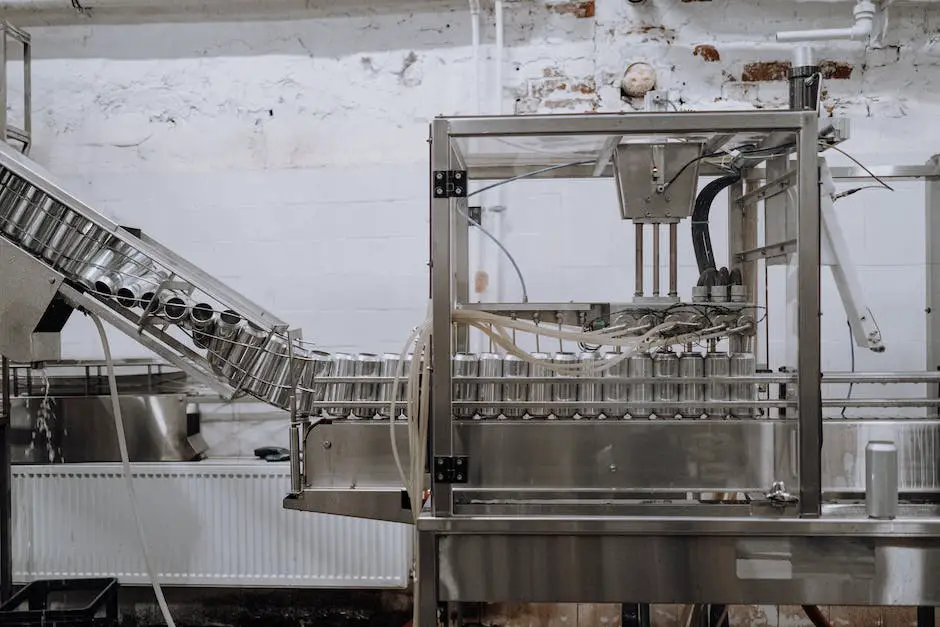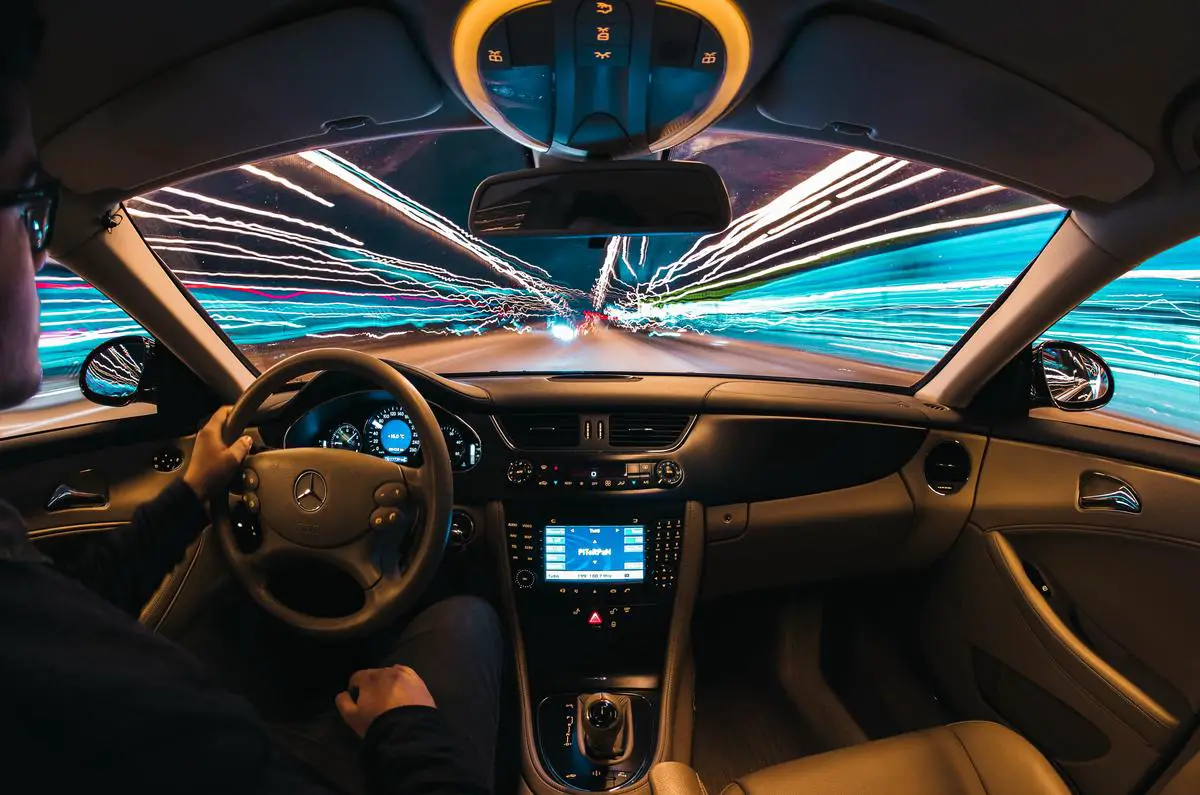Artificial Intelligence Revolutionizing the Automotive Industry
The renaissance of the automotive industry is underway, driven by the innovative prowess of Artificial Intelligence (AI). AI, a technology that endows machines with the ability to mimic human intelligence, is increasingly becoming the nerve center of the modern automotive industry. This seamless integration has allowed AI to steer various aspects of the sector, including autonomous driving, vehicle connectivity, smart logistics, and manufacturing, thereby shifting the dynamics of the industry. The following exploration unravels the multifaceted applications of AI in the auto industry and probes into how these technologically enhanced vehicles are more than just a novelty, but a game changer on the horizon.
Understanding AI in the Automotive Industry
Understanding Artificial Intelligence: Discovering the Enigma at Its Core
Artificial Intelligence (AI) can be defined as the science of making machines capable of mirroring human intelligence. It is not merely programming a computer to perform tasks; more importantly, it is about making the computer understand, learn, predict, and resolve complex problems like a human brain. The intelligence quotient is not limited to repetitive task excellence but amplifies to its learning capability, reasoning potential, understanding language, recognizing sounds, and interpreting visuals.
The Integration of AI in the Automotive Industry
One of the industries that has shown a significant uptake of AI is the automotive sector. From the manufacturing process to the end product, AI has worked its way into various stages to improve efficiency, safety, and overall user experience.
AI and Autonomous Driving
When most people think of AI in automobiles, they typically picture self-driving cars, or autonomous vehicles (AVs). Through a combination of various technologies such as computer vision, LiDAR, and radar sensors, AI allows vehicles to “see” their environment, interpret it, and make decisions based on these interpretations. These vehicles can perform complex tasks like identifying pedestrians, understanding road signs, and avoiding obstacles. AVs can operate without human intervention, reducing the chance of human error-induced accidents.
Vehicle Connectivity and AI
Vehicle connectivity is another area where AI is making significant strides. With AI, vehicles can now communicate with drivers, other cars, and even infrastructure, including traffic lights and parking spaces. AI enables the Vehicle to Everything (V2X) communication systems that integrate LTE and GPS to provide real-time updates on traffic, optimize routes, and prevent collisions.
Smart Logistics through AI
AI is also helping revolutionize logistics in the automotive industry. AI can track, manage, and analyze data to improve efficiency in the delivery of spare parts, finished vehicles, and other goods. AI’s predictive capabilities enable proactive maintenance of vehicles in the fleet, effectively reducing downtime. Moreover, Route Optimization using AI can save costs and time for logistics companies.
AI in Manufacturing
AI manufacturing in the automotive industry stands as a prime example of how automation can enhance productivity and efficiency. AI bots work in assembly lines, performing repetitive tasks accurately and tirelessly, increasing production rates while decreasing faults. Predictive maintenance powered by AI can detect potential equipment failures before they occur, saving time and expenses for the companies.
Artificial Intelligence (AI) is significantly revolutionizing the automotive industry. Its applications, ranging from autonomous driving to advanced manufacturing, have brought about remarkable improvements in safety, efficiency, and convenience. There’s no doubt that the continuous advancement and maturation of AI technology will soon bring about a wave of innovative applications in the industry.

The Impact of AI on Automotive Manufacturing
Redefining Automotive Manufacturing Through AI
AI is a rapidly evolving technology with far-reaching impacts across various industries worldwide. Within the automotive sector, this advanced tech has taken center stage, offering innovative solutions that enhance operations within auto manufacturing. With AI, production efficiency is significantly improved, and vehicles’ capabilities have been taken to new heights.
AI in Quality Control
Quality control in automotive manufacturing is a critical aspect that determines a vehicle’s safety, durability, functionality, and overall performance. Traditional quality control methods involve human inspections, which are prone to errors. Today, however, AI technologies have taken over, providing more efficient, effective, and reliable quality control processes.
For instance, AI-powered robotic arms are used in car manufacturing processes to inspect the quality of parts and assemblies. These robots are armed with cameras and AI software that can identify defects and irregularities more accurately and rapidly than human inspectors. This technology has significantly reduced errors commonly associated with manual inspections, thereby improving the quality of vehicles produced.
Predictive Maintenance with AI
Before the AI revolution, manual processes and rule-based systems dominated the preventive and corrective maintenance in the auto-manufacturing industry. Now, AI has introduced predictive maintenance—a game-changer that prevents equipment failure and unnecessary downtime. It leverages machine learning (ML), a subset of AI that interprets data patterns to predict future outcomes.
Predictive maintenance makes use of AI sensors installed on manufacturing machines to monitor their condition and performance. These sensors gather data that is analyzed by ML algorithms to predict potential machinery issues even before they occur. The ability to foresee machine failures improves efficiency and reduces costs of emergency repairs and part replacements, thus optimizing factory operations and productivity.
AI in Inventory Management
Inventory management has been a critical challenge for auto manufacturers due to the synchronization required between various parts and vehicles being produced. Inventory errors can lead to overproduction or shortage of auto parts, resulting in cost overruns and production delays.
AI technologies, including predictive analytics, have revolutionized inventory management by accurately forecasting demand, hence promoting a balance between supply and demand. These technologies analyze historical sales data, consider variables such as market trends and seasonal fluctuations, and predict the future demand for different auto parts. This way, manufacturers can plan and adjust their production levels accordingly to reduce waste and meet the market’s needs.
Assembly Line Automation Through AI
Automated assembly lines powered by AI technologies have significantly increased manufacturing speed, efficiency, and consistency in the automotive industry. Traditionally, assembly lines were manned by human workers who would manually assemble vehicle parts. This process was time-consuming, prone to mistakes, and resulted in uneven quality of output.
Today, AI-powered robots control assembly processes, perform complex tasks, and make decisions much faster and more accurately than humans. They also work continuously without fatigue or loss of focus, resulting in greater production output. In addition, the use of AI in assembly line automation ensures uniform quality of products, increases worker safety, and allows for real-time monitoring and optimization of the production process.
Artificial Intelligence (AI) is revolutionizing the automotive manufacturing industry, birthing a period of enhanced efficiency, precision, and superior quality. By utilizing AI, automotive manufacturers stay ahead in competition and handle fluctuations in market demands, ultimately aiding them to deliver top-notch vehicles.

AI in Autonomous Driving and Vehicle Connectivity
AI and Its Role in Autonomous Driving
The influence of Artificial Intelligence (AI) on the automotive industry is remarkable, as it functions as a crucial aspect in the creation of self-driving vehicles. AI forms the core of autonomous driving, allowing vehicles to move and navigate without any human interference by processing and interpreting environmental data, and making effective decisions based on it.
AI algorithms act like an autonomous vehicle’s brain, comprehending various elements of the environment using data from diverse sensors such as radars, lidars, and cameras. They recognize things like other vehicles, pedestrians, road signs, lanes, and traffic lights, and accordingly, compute the best feasible navigation path. Simultaneously, they manage the intricate aspects of driving such as accelerating, decelerating, steering, and braking.
Machine learning – an offshoot of AI, significantly improves the vehicle’s decision-making capabilities over time. As the AI system gains more data from the vehicle’s driving hours, it uses this information to refine its model, thus boosting the overall safety and efficiency of the driving system.
AI in Vehicle Connectivity
AI also plays a vital role in advancing vehicle connectivity. Today, enabled by AI, we are seeing increased vehicle-to-vehicle (V2V) and vehicle-to-infrastructure (V2I) communications.
In V2V communication, vehicles effectively ‘talk’ to each other, exchanging information about their speed, direction, brake status, etc. This data sharing facilitates anticipatory driving, thereby enhancing road safety. For instance, if a vehicle ahead applies abrupt brakes, the following vehicle’s AI system will instantly know about it and react accordingly, even before the incident becomes visually apparent to a human driver. AI algorithms are also able to detect patterns and predict other vehicles’ likely actions, allowing for safer navigation in complex traffic scenarios.
V2I communication, enabled by AI, allows vehicles to interact with traffic infrastructure such as traffic lights, stop signs, and even the roads themselves. For instance, if a traffic light ahead turns red, smart vehicles can slow down or stop without any human intervention. This type of communication enhances traffic management, reducing congestion, and improving the overall efficiency of transportation systems.
Overview
Artificial Intelligence (AI) plays a pivotal role in driving the development of autonomous vehicles and vehicle connectivity. The ability of AI to learn and adapt from real-world experiences, paired with its capacity to process large volumes of sensory data, is catalyzing transformation in the automobile industry. Future advancements in AI technology are set to provide more intuitive and safer driving experiences, revolutionizing the transportation scenario.

Photo by samuele_piccarini on Unsplash
Challenges and Future Prospects of AI in Automotive
Challenges Faced While Integrating AI in the Automobile Industry
Despite its recognition as a game-changing technology in the automotive sector, the incorporation of artificial intelligence brings forth several challenges. These range from improved autonomous driving to predictive maintenance.
The pivotal challenge is ensuring the safety of AI-enabled cars. AI systems, while exceptional, still have the potential for errors that could result in lethal accidents. Misinterpretations of traffic signals by autonomous vehicles or inaccurate prediction of pedestrian movement are perilous scenarios. Though extensive testing and comprehensive AI training are undertaken to alleviate hazards, the complexities of real-world conditions make it an ongoing challenge.
Regarding data privacy and security, AI-equipped cars generate substantial amounts of data. While this data aids in enhancing performance and functionalities, it also stirs concerns about data storage and utilization, particularly in the wake of increasing cyber security risks. Absent effective protective measures, users’ personal information remains susceptible to misuse and exploitation.
Last but not least, regulatory issues in relation to AI in automotive industry pose a considerable challenge. As of today, existing laws or guidelines governing AI applications in vehicles are sparse. This ambiguity sparks unease, especially in the area of autonomous driving, which is the subject of numerous debates in various jurisdictions.
Future Prospects of AI in the Automotive Industry
Despite these challenges, the future prospects for AI in the automotive industry look positive, with several trends indicating continued growth and development.
The integration of AI in Advanced Driver Assistance Systems (ADAS), is a major driver of growth. AI algorithms used in these systems can warn of imminent danger, initiate emergency braking, or keep the vehicle in its lane. These technologies are only getting better and more advanced, giving us a glimpse into a future where AI is fully integrated into every vehicle, ensuring safety and enhancing driving comfort.
Another future prospect is predictive maintenance, where AI can predict potential faults and problems before they happen. This can save a significant amount of time and resources, and also prevent any injuries or accidents that might be caused by mechanical breakdowns.
Furthermore, there is the aspect of autonomous driving. While there is substantial debate and uncertainty surrounding this area, there is also significant potential. Currently, Level 5 autonomous driving (total automation) is not yet within our reach. However, substantial progress has been made, and perhaps in the future, this level of automation could become a reality.
Finally, there’s the prospect of AI in managing car fleets and ride-sharing services. This includes everything from optimizing routes to managing demand and scheduling maintenance. AI could vastly improve the efficiency of these services, reducing costs and increasing profits.
In conclusion, while there are challenges and hurdles to integrating AI into the automotive industry, the future looks bright with a myriad of possibilities opening up. The key lies in navigating these challenges effectively to fully exploit the potential of AI, to achieve the ultimate goal – safer, more efficient and smarter vehicles.

Undeniably, AI has opened an array of possibilities in the automotive industry, dictating a new age of smart and connected vehicles. However, the integration of AI is not without its challenges. Safety concerns and regulatory hurdles stand as major roadblocks on this path of innovation. Yet, the prudent investment in overcoming these obstacles and the continual pursuit of advancing AI technologies forecast a future of the automotive industry that is smarter, safer, and seamlessly connected. As AI advancements continue to unfold, they promise to redefine the traditional landscape and rev up the evolution of the automotive sector, driving it towards an era of unprecedented growth and prosperity.
